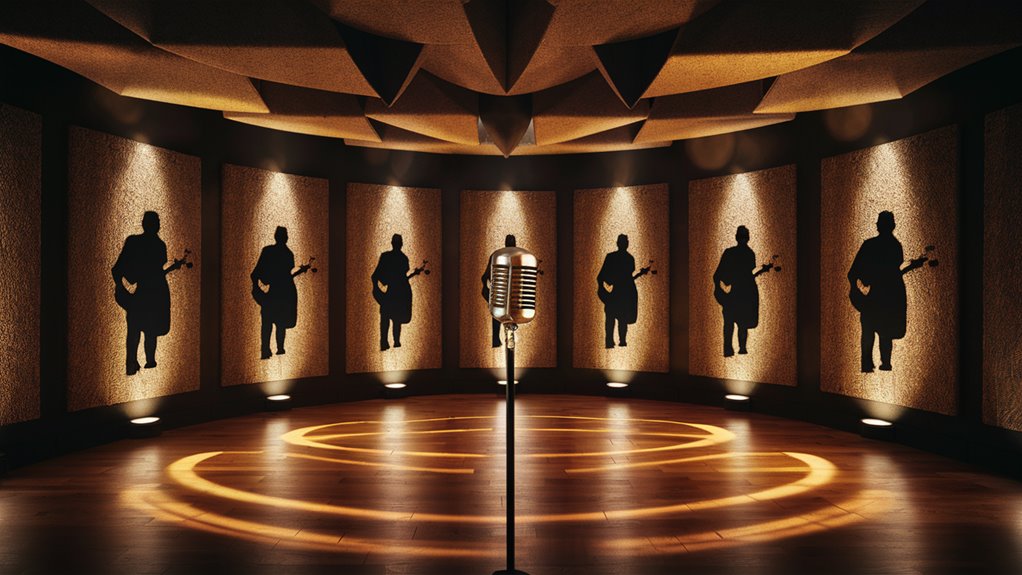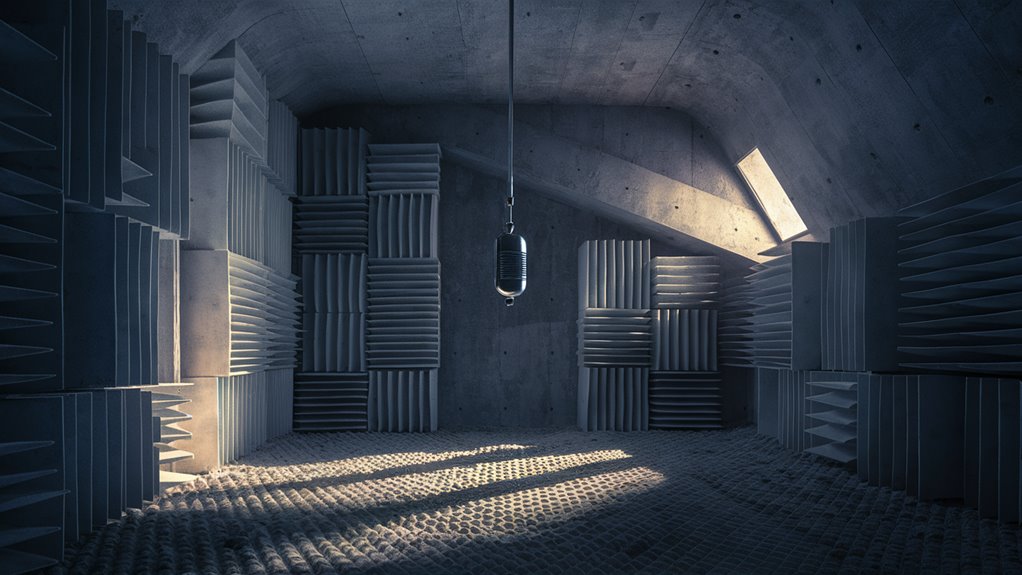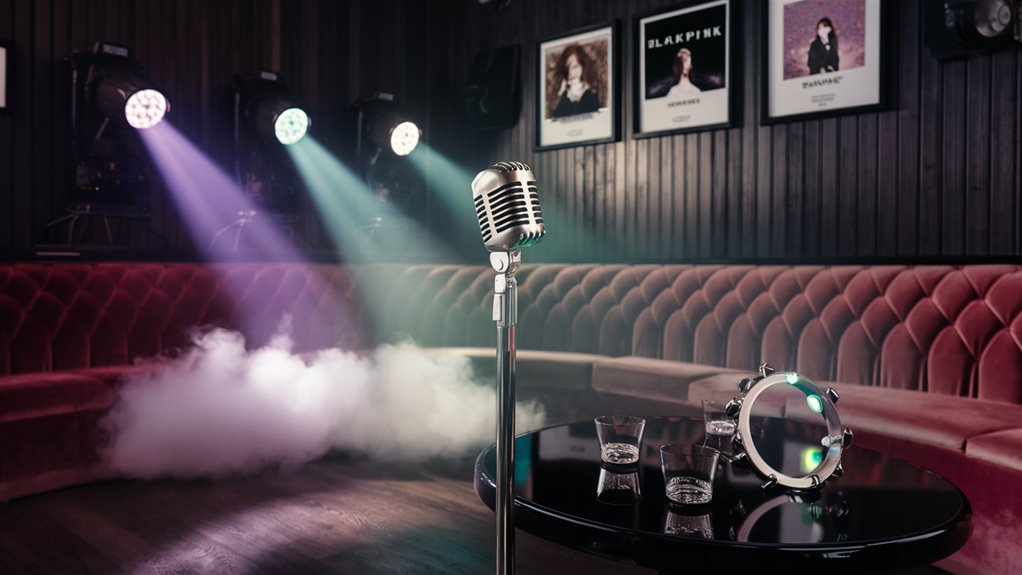How to Pick the Best Song for an Echo Room

Know Echo Room Sound
Echo room sound needs right song picks for top sound. You must pick songs that go well with the natural echo and fade of your room.
Think About Speed and Beat
Songs under 100 BPM are best for clear echoes, making clean, sharp echoes. Stay away from hard beat patterns as they can muddy up the sound. The right speed range should fit your room’s fade time of 1.5-2.5 seconds.
Best Song Bits
Step-by-step tunes and mid-range singing work best in echo rooms. These bits stop bad sound build-ups while keeping sound clear all over the room.
Top Song Types
Room music, classic tunes, and solo singing are great in echo rooms because they:
- Have good sound range 호치민 퍼블릭가라오케 예약하기
- Keep tools in check
- Have clear tunes
- Spread sound evenly
Better Echo Work
Match your song’s bits to the room’s sound mark. Think about:
- Reverb fade times
- Sound range
- Sound soak levels
- Room size
- Wall stuff
The best song pick fills out these sound bits while cutting down on sound mess and mix-ups.
Know Room Sound
Full Guide to Room Sound
Base of Room Sound
Room sound is key for top sound in any place. The main bits that make room sound are echo time, sound range, and sound soak levels. These main bits set how sound waves mix in a closed spot and shape sound quality.
Room Shape and Size
Natural room sounds come from the room’s size. To get these key sounds, measure the room’s length, width, and height. Using a real-time checker spots key sound highs and lows that hit sound output. These checks help put sound fixes and set up sound systems right.
Wall Stuff and Echo
Sound fixes work well or not based on wall stuff. Hard walls like stone, glass, and metal make long echoes, while soft stuff cuts reflections. The RT60 check (sound fade time) is key to know room work. Rooms with RT60 times over 2 seconds need careful music picks and fix set-up, as too much echo can ruin sound clearness and sharpness.
Sound Work Best Tips
- Balance soak and spread
- Tackle room tones with smart bass traps
- Think about sound soak levels by frequency
- Watch and tweak RT60 times for best work
- Manage early and late echoes
Speed and Echo Mix
Know Speed and Echo in Music Work
Key Link Between Speed and Echo
Music speed and echo bits mix key in echo-filled spots. Slow speeds under 100 BPM let echo effects grow full without cuts. Good breaks between music lines are a must for top sound fade, especially in spots with big echo.
Handle Fast Songs in Echo Spots
Fast speeds make tough overlapping echoes, mostly in spots with long echo times (RT60 over 2 seconds). Songs with sharp short sounds or planned breaks work best. Clear sound points, seen in songs like Pink Floyd’s “Another Brick in the Wall,” do better than quick sing setups in echo-filled spots.
Sound Work Tips and Pace Fixes
Right Beat Spacing
The rule shortest beat gap (seconds) = RT60 × 0.7 guides echo stop. This sums help cut sound mess and keep sound clear. For spots with much sound bounce, cutting speeds by 10-15% from the first songs makes sure top sound split and stops sound blur.
Main Work Bits
- Check room fade time
- Change speed based on sound bits
- Plan breaks in songs
- Think about echo growth
- Manage reverb
Voice Range Bits
Voice Range Work for Echo Room Songs

Know Voice Range in Echo Spots
Sound pros must check voice range when picking songs for echo room shows. Songs with big voice ranges are hard in echo spots, as sound delays can mess up sound between voice levels. Mid-range voice picks give the best results, making clean echo ends and sharp sound rings.
Pick Right Songs
Pro checks of a singer’s comfort area are key before setting song picks. Echo rooms make pitch shifts big, so it’s key to pick songs within 80% of the performer’s natural voice range. Long notes in high or low voice spots risk bad sound build-up, while mid-range songs keep top sound clear and tone sharp.
Make Melody Moves Better
Echo room sound works best with voice tunes that move step by step rather than in big jumps. This way keeps echo patterns even and cuts sound mix-ups between original sound and echoes. Key moves down by one or two steps can make hard pieces work better, giving more control over the room’s sound answer and overall sound quality.
Best Song Types
Top Song Types for Echo Room Songs
Best Genre Picks for Natural Sound
Classic music, choir songs, and old folk tunes are top picks for echo room songs. These types use the sound room’s echo bits to boost song work through their natural sound bits and range change.
Top Music Styles
Natural Echo-Boosted Types
- Room music bands
- Old song shows
- Solo sing setups
- Soft jazz tunes
- Solo music bits
The win of these types comes from their use of long notes and natural changes, letting the echo room’s sound bits boost the whole sound quality.
Types to Stay Away From
Fast-paced and beat-heavy types bring big troubles in echo rooms:
- Hip-hop making
- Club music
- Loud rock songs
- Drum-filled setups
These music types often hit time problems and beat mix-ups because of long echoes and many sound bounces.
Make Echo Room Songs Better
Focus on picking music with right gaps between sounds and low beat mess. The best recording finds a match where the echo room’s natural sound bits fill out rather than fight with the music work. For top work, put top styles that use the space’s echo bits while keeping sound clear and sharp in the final songs.
Beat and Echo Mix
Beat and Echo in Sound Work
Deep Look at the Tech Link
The mix of beat and echo makes special tech troubles when making songs in echo rooms. Hard beat patterns need right fade time handling to keep mix clear. The room’s natural ring changes how we see tempo and the whole sound feel.
Top Recording Moves
Fade Time Handling
RT60 check starts the plan for song picks and echo control. Songs over 120 BPM do well with short fade times (1.2-1.8 seconds) to keep beat clear. Slow tune setups can use long echo tails up to 2.5 seconds while keeping the beat right.
Sound Checks
Beat mapping against early echoes is key for the best results. Digital look tools show key fast sound mixes with room shape, letting us see how beat bits will act. Low sound control needs care to stop sound waves from ruining the planned beat feel. Don’ts of Karaoke Etiquette
Top Tech Moves
Close watch of room sound makes sure the right mix of time and space bits. Good checks of echo patterns and fade bits lets us set sound just right, making both beat clear and room deep.
Sound Fade Time
Know Sound Fade Time in Sound Work
Top Fade Time Bits
Sound fade time is key for top sound outcomes across different music uses. The best fade time range is often 1.5 to 2.5 seconds for new music work, but right changes depend much on speed and feel bits.
Genre-Specific Fade Settings
For slow tunes, long fade times of 2.8-3.2 seconds let notes last and mood grow. On the other hand, fast tunes gain from tight 0.8-1.2 second fade times to keep beat clear and stop bad sound build-up. Sing work really needs right fade time settings for best results.
Top Fade Time Moves
How full a tune setup is sets the best fade time picks. Full music setups need short fade times to dodge sound mix issues, while light setups can use long fade times. Smart fade time changes through song parts – short during lines and long during hooks – makes room deep while keeping mix clear. The mix of fade time and main music bits stays key to top sound quality.


